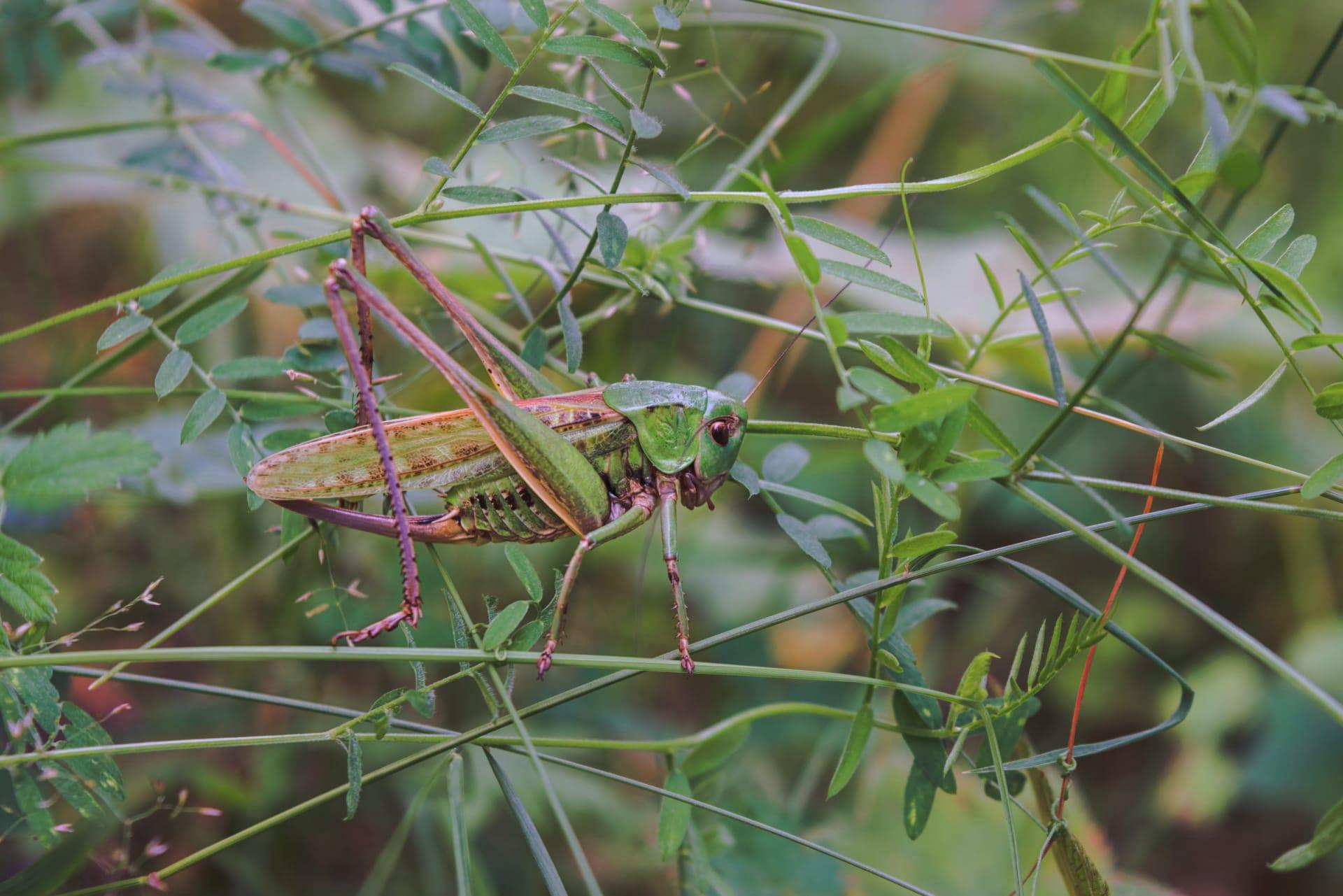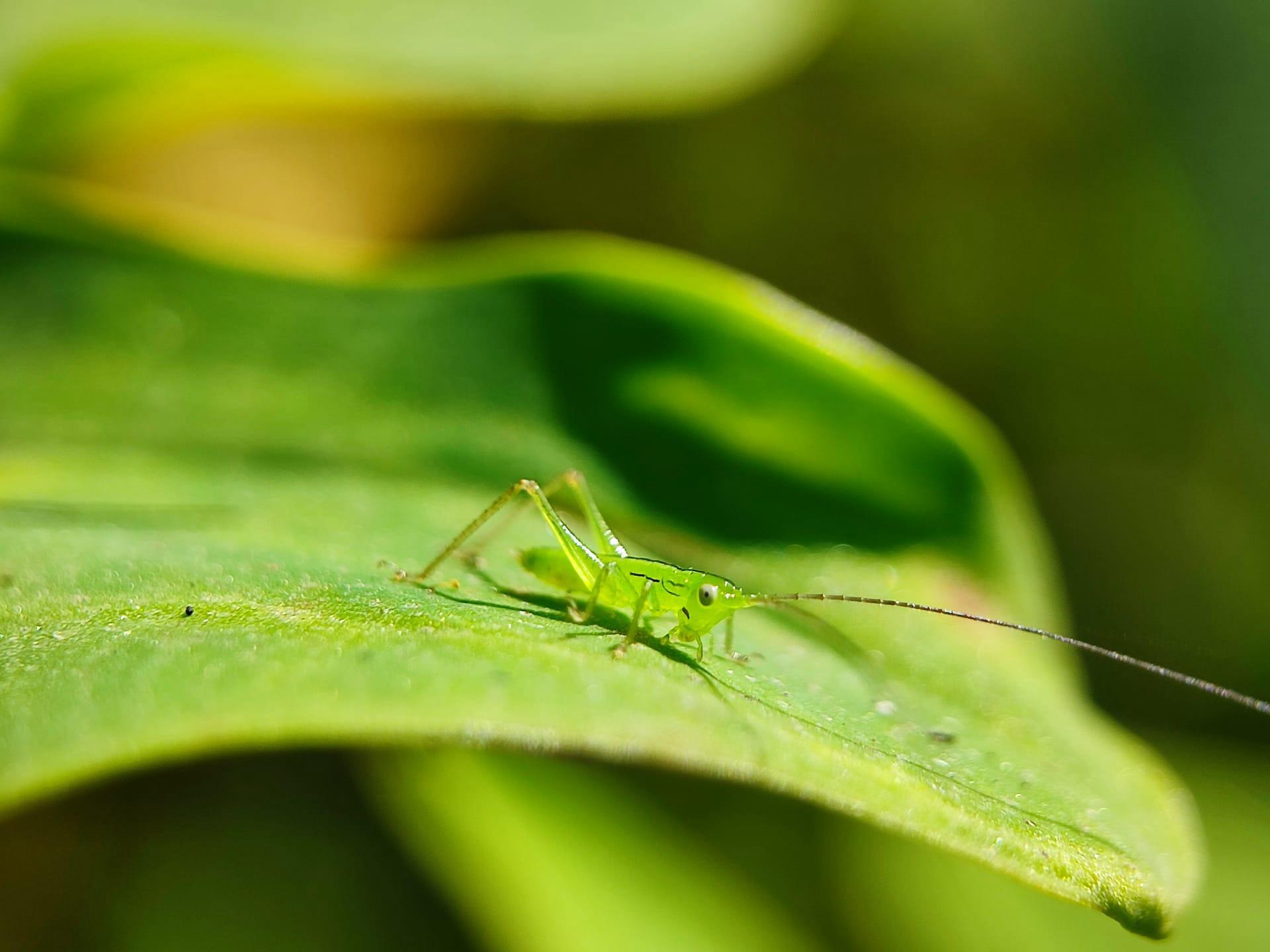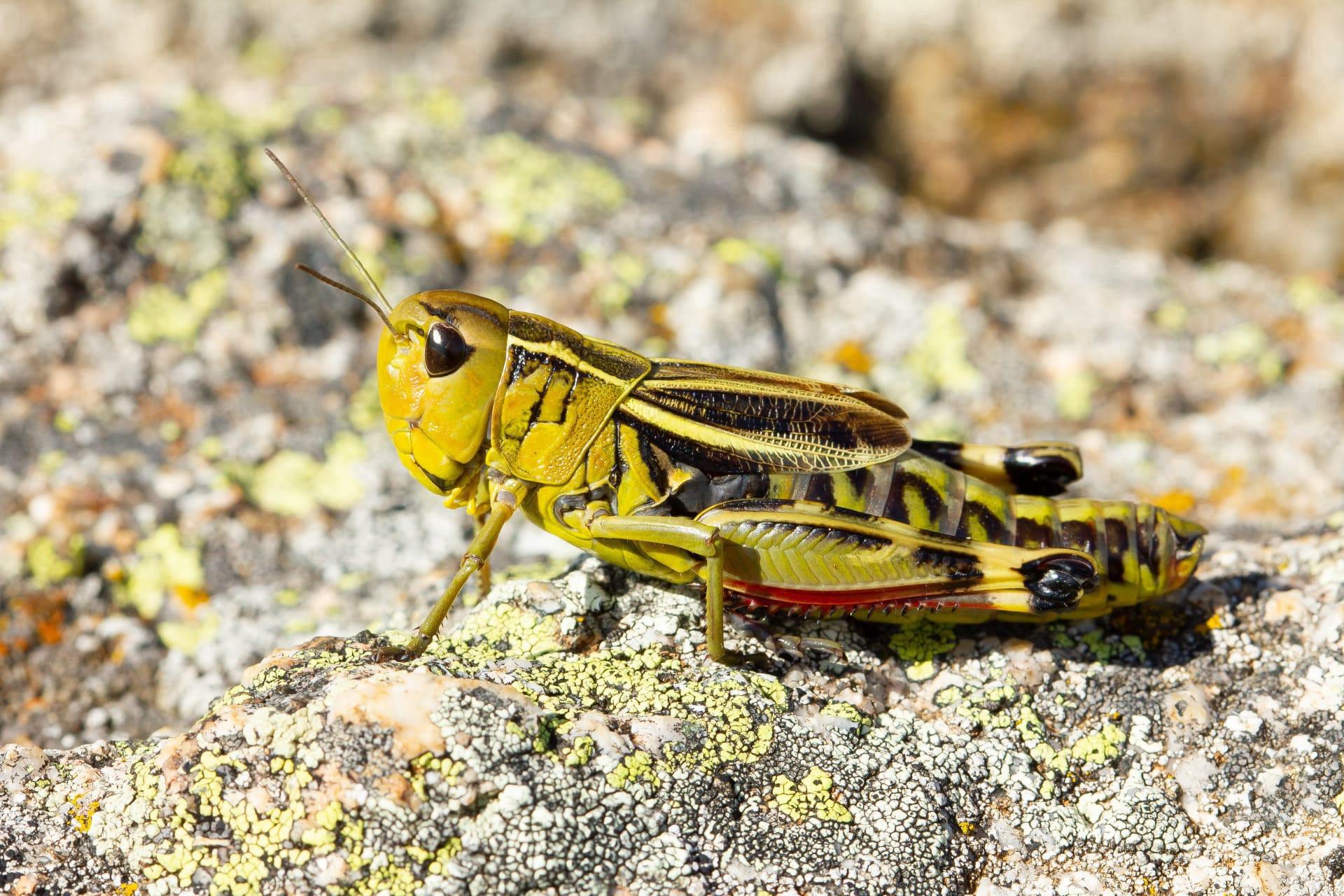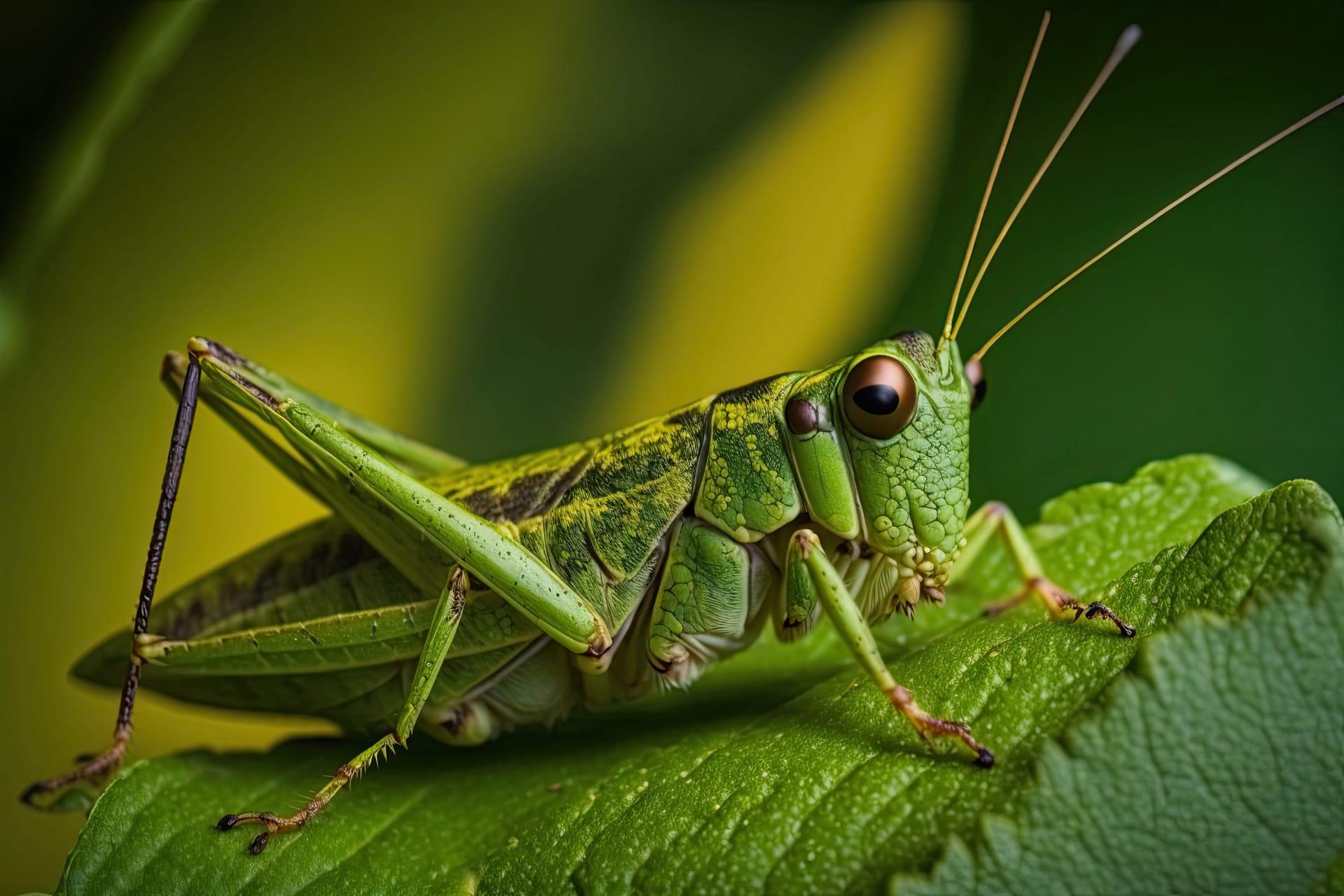Grasshopper Trivia
- Home /
- Trivia Question /
- Animal /
- Grasshopper Trivia
1
Question: How far can a grasshopper jump?
Answer: Grasshoppers are renowned for their jumping ability. A grasshopper can leap up to 20 times its body length in a single bound. Considering their average length of about 5 cm, this translates to jumps of around 1 meter. This incredible ability is due to their strong and long hind legs, which work like miniature catapults.
Question: What is the lifespan of a grasshopper?
Answer: The lifespan of a grasshopper depends on its species and environmental factors. On average, grasshoppers live for about one year. This includes their time as eggs, nymphs (juveniles), and adults. Adult grasshoppers, after reaching maturity, typically live for around 40 to 50 days.

2
Question: Do grasshoppers have ears, and if so, where are they located?
Answer: Yes, grasshoppers do have ears! Their ears are not located on their heads, but on their abdomens. Specifically, they are found on the first segment of the abdomen, just behind the thorax. These ears are simple structures, consisting of a thin membrane called the tympanum, which vibrates in response to sound waves.
Question: Can grasshoppers harm humans?
Answer: Generally, grasshoppers are harmless to humans. They don't bite or sting people. However, they can be a nuisance, especially in large numbers. Grasshoppers are known for their appetite for plants and can damage crops, gardens, and vegetation, which indirectly affects human activities, particularly in agriculture.

3
Question: What do grasshoppers eat?
Answer: Grasshoppers are primarily herbivores. They feed on a wide range of plants, including leaves, flowers, bark, and seeds. Some species prefer certain plants, while others have a more varied diet. Their feeding habits can make them agricultural pests, as they sometimes consume and damage crops like corn, wheat, barley, and cotton.
Question: How do grasshoppers breathe?
Answer: Grasshoppers breathe through a system of air tubes called tracheae. Air enters and leaves the grasshopper's body through small openings called spiracles, located along the sides of the body. This system allows for efficient gas exchange directly with their tissues, bypassing the need for lungs or gills.

4
Question: Are grasshoppers and locusts the same?
Answer: Grasshoppers and locusts are closely related, but they are not the same. Locusts are a type of grasshopper, known for their swarming behavior. When environmental conditions are right, certain species of grasshoppers can transform into locusts, changing their behavior and even their physical appearance to become more gregarious and migratory.
Question: How do grasshoppers communicate?
Answer: Grasshoppers communicate primarily through sound and vibration. They produce sound in a process called stridulation, which involves rubbing their hind legs against their wings or abdomen. This sound can be used for mating calls or to ward off predators. They can also sense vibrations through the ground and their body to communicate.

5
Question: Do grasshoppers undergo metamorphosis?
Answer: Yes, grasshoppers undergo a type of metamorphosis, but it's different from that of butterflies. They experience what's known as incomplete metamorphosis. This process includes three stages: egg, nymph, and adult. The nymph looks like a small adult but without wings. As it grows, it sheds its skin (molts) several times before reaching adulthood.
Question: What role do grasshoppers play in the ecosystem?
Answer: Grasshoppers play a significant role in the ecosystem. They serve as a food source for many animals, including birds, rodents, and reptiles. Additionally, their feeding activity can help in the breakdown and recycling of plant material, contributing to soil health. Grasshoppers also aid in pollination occasionally, though not as significantly as bees or butterflies.